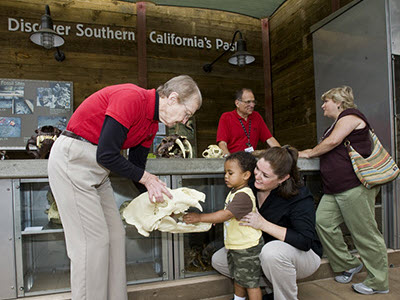 |
Fireground Operations: Safe Strategy |
2.00 |
This introductory course describes fireground strategy selection to create a safe operation. The course introduces the concept of safe fireground strategy and presents a procedure for selecting a strategy through risk assessment. Two operational modes are established, and five strategic plan options are defined for each mode. The course focuses on fire safety principles and scene safety awareness. The course is evaluated with a multiple-choice exam and requires a passing score of 80%. The clock time for this course is approximately two hours. |
 |
Cultural Competency for Children and Families (CDA 4) |
2.00 |
As classrooms and communities reflect our increasingly interconnected world, cultural understanding becomes essential for educators. This course equips you with the knowledge and tools to navigate the spectrum of cultural awareness, sensitivity, responsiveness, and competence. Together, we'll explore impactful practices for fostering inclusive environments and culturally competent approaches that empower children and families. |
 |
Introduction to Warehouse Operations |
1.00 |
This course covers the essential skills and knowledge needed to excel in a warehouse environment including the basics of warehouse operations, safety protocols, inventory management, and efficient logistics practices. |
 |
Grammar Skills: The Importance of Grammar |
1.00 |
This course will cover how to define grammar and discuss its importance. You will also learn how to identify and correctly use different forms of nouns and verbs. |
 |
Project Management - Intermediate: Risk Analysis, Response, and Control |
1.00 |
This course will cover how to identify the goals and benefits of risk assessment and follow the qualitative risk analysis process and how to use the quantitative analysis techniques and draw a decision tree. You will also learn how to follow the risk response process and identify the categories for possible risk response plans and how to use the methods of monitoring and controlling project risks and identify the outcomes of monitoring and control. |
 |
Project Management - Intermediate: Organizational Planning |
0.75 |
This course will cover how to identify the characteristics of a successful project manager, different types of power, and the different project organizational structures. You will also learn how to create a project team, and identify the many facets of organizational planning. |
 |
Project Management - Intermediate: Staff Acquisition and Team Building |
1.00 |
This course will cover how to identify the right team members for a given project, negotiate for project staff, and identify categories of personnel problems. You will also learn how to develop a project team, overcome barriers to effective team development, and apply motivational techniques. |
 |
The Stages of Community—How to Create Effective Group Dynamics in the Workplace |
1.00 |
We may not be uniform—in race, politics, gender, generation, etc.—but we can be unified in love and service. This is how we get there: Stage One is Psuedo-community. Relationships are a half an inch deep and fake. We pretend we all get along, but we really can’t stand each other. Stage Two is Chaos. We quit pretending that we like each other, we finally aired our differences, and now the battle has begun to change each other. Stage Three is Surrender. We’ve accepted that we are stuck with each other, and we’ve proven that we’ve only hurt each other in the process of trying to change each other. Finally, though, we’re willing to surrender our agenda (and all other barriers to our communication) so that we might understand one another. Now we have hope. Stage Four is Community. We still don’t agree on everything, but we’ve learned to treat each other with dignity and respect. Our campus is a relationally safe environment. We share a sense of belonging and purpose. This is the place where lives are impacted. Everyone wants to be on this campus. |
 |
Fireground Operations - Strategy Tactic Task |
2.00 |
This course introduces a common language for fireground operation; strategy, tactics, and tasks in an effort to create a standardized interpretation of terminology. This course describes safe strategy selection, defines prioritized tactical objectives, and lists assigned tasks for each tactical objective dependent on strategy. This course introduces the idea of five primary tactical objectives, five secondary tactical objectives, and five functions of command that must be accomplished on every fireground. The course concludes with a procedure for the application of selecting a safe strategy, prioritizing effective tactical objectives, and assigning efficient tasks through the function of command. |
 |
Children's Temperament: A Practical Approach to Meeting Individual Needs (CDA 3) |
2.00 |
Every child comes into this world as a unique individual, with unique ways of responding to the world in the expression of their emotions and actions. This is called temperament. Being able to recognize and understand differences in temperament differences is crucial for nurturing a child's social emotional health. This course is designed to be part of a Child Development Associate (CDA) Credential™ curriculum. It covers CDA Subject Area 3: Supporting Children's Social and Emotional Development. This course can also be taken as a stand-alone learning event, or as part of a broader early childhood education curriculum. |
 |
Young Worker Safety Training |
0.75 |
This course covers federal laws regarding working minors as well as common workplace hazards. |
 |
Excellence in Service - Advanced: Customer Loyalty |
1.00 |
This course will focus on how to create customer loyalty through dedicated employees and identify the fundamentals of customer loyalty. You will also learn how to understand your customers and make service memorable. |
 |
Project Management - Advanced: Project Integration and Plan Development |
0.50 |
This course will cover how to measure data during project integration and differentiate between project and product life cycles. You will also learn how to identify the importance of developing a project plan, the elements of a project plan, the key input required for project plan development, and methods used in project plan development. |
 |
Project Management - Advanced: Implementing Plans and Controlling Change |
0.75 |
This course will cover how to use a project management information system, implement a work authorization system, and conduct mid-project evaluation. You will also learn how to identify the information and supplies needed to control project change, implement a change control system, and identify control maintenance methods. |
 |
Project Management - Advanced: The Project Management Process |
0.75 |
This course will cover how to identify the project management process groups and variables and differentiate between product-oriented processes and project management processes. You will also learn how to initiate and plan a project. |
 |
Mental Health First Aid in the Classroom |
1.00 |
A student shouts in rage, “I wish I were dead!” Is he expressing suicidal ideation? A student quickly covers cut marks over her left forearm. Should we approach her or respect her privacy?
The National Alliance on Mental Illness data show that one in five adolescents between the ages of 13 and 18 will experience a severe mental illness, and only 20 percent will receive treatment. We know, then, that our students are coming to us with mental health needs that are greater than ever before. This can feel overwhelming, especially when we want to help our students achieve to their fullest potential and are not sure how to.
The good news is that basic mental health first aid can offer practical, valuable tools. We don’t need to be a cardiac surgeon to perform CPR, and sometimes CPR can save a life. Similarly, we don’t have to be a licensed mental health professional to provide basic mental health first aid in the classroom.
|
 |
Fire Origin and Cause – Basic |
2.00 |
This course is an introductory level course that defines fire cause and origin investigation and arson awareness. This course explains fire origin, cause, and arson and a description of common fire causes. Fire cause classifications are defined, and arson motives are described. Signs of arson are identified, and methods for evidence preservation are outlined. The course is evaluated with a final exam that requires a passing score of 80%. The clock time for this course is approximately 2-hour. |
 |
Take it Outside!: The Importance of Outdoor Play (CDA 2) |
2.00 |
This course tackles the alarming decline in outdoor play and empowers you to reclaim its critical role in children's well-being. Explore research-backed evidence highlighting the benefits of outdoor time on healthy habits, physical development, and cognitive growth. Discover practical strategies to motivate children to embrace fresh air, movement, and connection with nature, fostering happier, healthier, and stronger youngsters who thrive in the great outdoors. |
 |
San Diego Zoo - Interpretation Basics: Module 1 |
2.50 |
An understanding of interpretation techniques is increasingly important for professionals and volunteers in zoos, aquariums, museums, and a variety of other tourism and hospitality organizations. This course will introduce the basics of interpretation, including the origins of interpretation, Tilden’s Six Principles of Interpretation, connecting tangibles with intangibles, and understanding visitors’ needs and motivations. |
 |
Excellence in Service - Advanced: Service Teams |
1.50 |
This course will cover how to implement proper training and empower employees and motivate employees and reinforce desirable behavior in them. You will also learn how to build customer service teams and select the right employees and conduct an interview. |
 |
Business Accounting: Stockholders' Equity |
1.50 |
This course will cover how to identify various types of stocks and calculate the value of a corporation’s stock as well as how to use financial ratios to calculate book value and market value per share. You will also learn how to identify the components of stockholders’ equity and report stockholders’ equity on financial statements. |
 |
Business Etiquette: Office Protocol |
1.00 |
This course will cover how to describe business etiquette, present a professional appearance, and identify appropriate business attire. You will also learn how to practice cubicle and office etiquette and how to develop positive coworker relationships and avoid rumors, gossip, and conflicts. |
 |
Business Etiquette: Professional Conduct |
0.75 |
This course will cover how to use the Internet appropriately and how to identify and handle ethical dilemmas and maintain loyalty and confidentiality in the workplace. You will also learn how to handle personal issues in the workplace, such as flirting, dating, office romances, and sexual harassment. |
 |
Differential Diagnosis of Dementia |
1.00 |
At the end of this course, you will be able to:
Define Alzheimer's disease, and identify its risk factors.
Examine the differences between Alzheimer's disease and dementia.
Explore the pathology and the clinical presentation of Alzheimer’s disease, frontotemporal dementia and dementia with Lewy bodies.
Examine the diagnostic tests and tools used in the diagnosis of dementia. |
 |
Salvage Operations |
1.00 |
This introductory level course introduces the concept of salvage operations. The course defines salvage operations and describes techniques used to protect buildings and contents from damage caused by fire suppression operations and preserve evidence of fire origin. This course is evaluated with a final quiz. The clock time for this course is approximately one clock hour. |


























